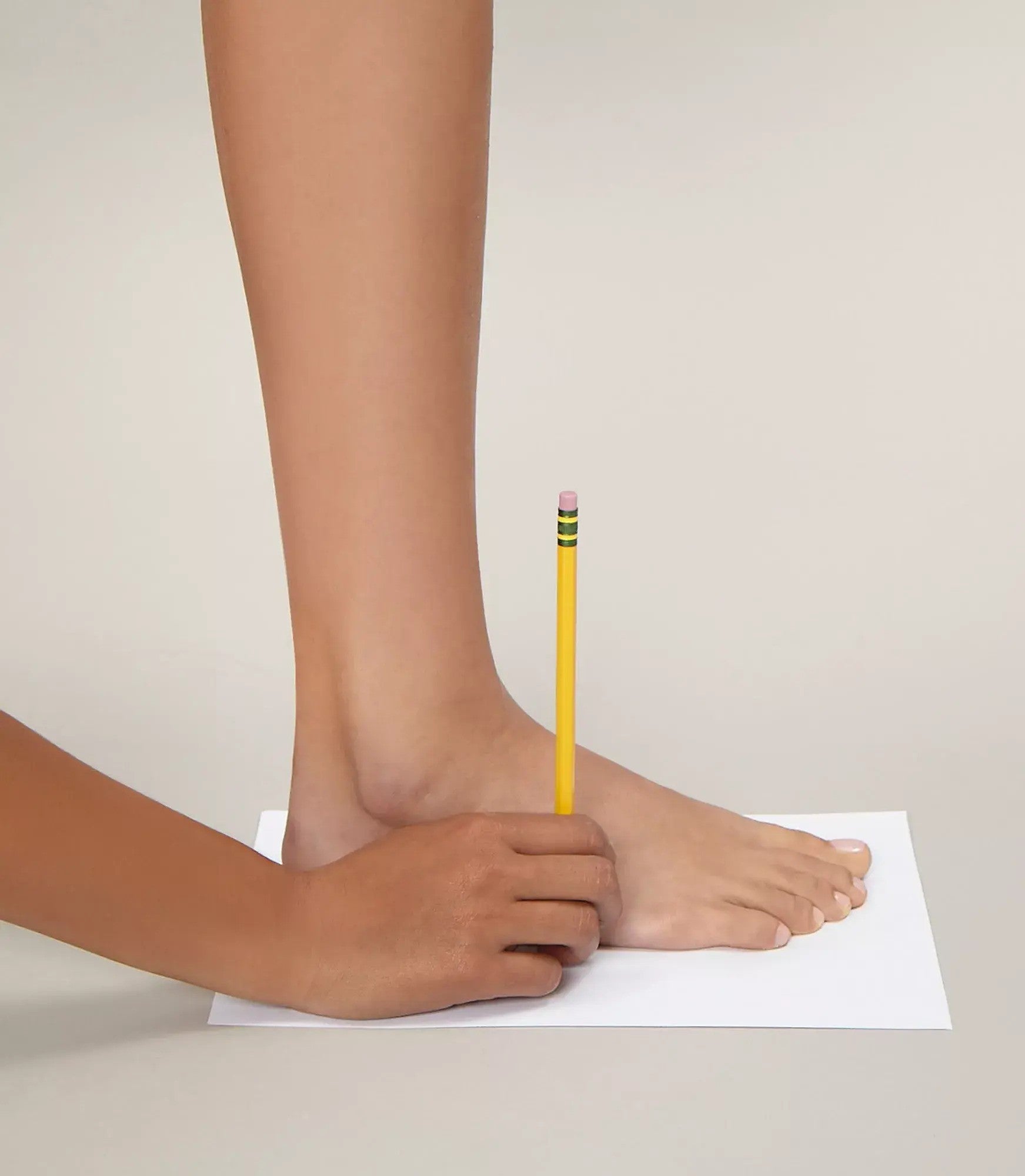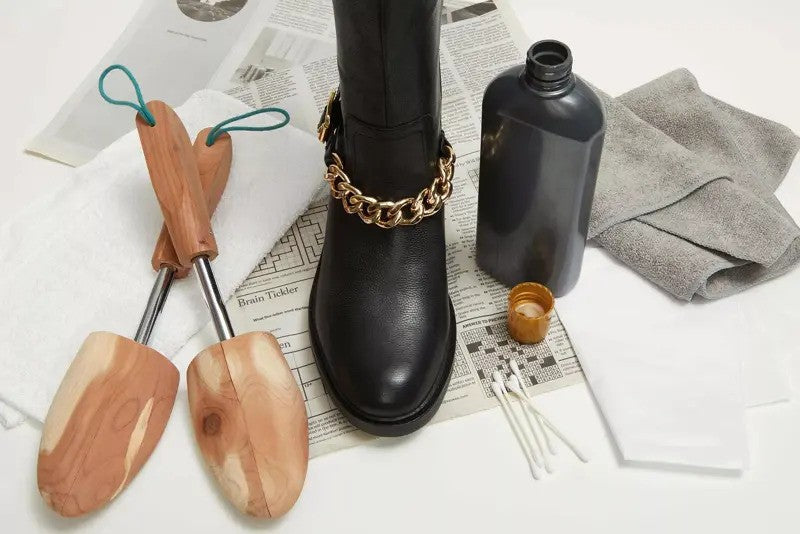Winter weather takes a heavy toll on fine leather footwear. Your shoes and boots—more than any other accessory or piece of clothing—take the brunt of the elements as you stroll through rain, snow, sleet, ice and salt.
But don’t let cold temps and blustery conditions stop you from wearing your favorite Vince Camuto footwear in the winter. With easy, preventative care—like simple conditioning , weatherproofing and polishing —you can enjoy your chic shoes from the snowy holiday season through April showers.

Wintry Elements Rob Leather of Moisture and Beauty
Leather is porous, breathable and filled with natural oils that keep it supple and lustrous. Cold, harsh weather steals moisture from leather. Among leather’s worst enemies:
- Water, including rain, sleet and melted snow. When shoes get soaked, leather’s oil molecules bind with the water. As the water evaporates, it extracts the oils, diminishing the flexibility and luster of the leather.
- Salt frequently used on snowy roads and slick sidewalks to melt ice, add traction and provide walking stability. When combined with water, salt further dries and reduces the vitality of leather. Contrary to popular belief, however, rock salt alone does not create salt stains on your footwear. The stains are formed when wet leather dries, pulling up materials used in the leather tanning process and leaving white, filmy marks on your shoes.
- Household cleaners. Never use DIY stain-removers or commercial home cleansers on shoe salt marks. These chemical-laden solutions can strip, discolor and ruin your footwear.
5 Weatherproofing Best Practices
- Be proactive. Clean and condition shoes and apply water repellent before setting foot on wintry sidewalks.
- Winterize new shoes and boots immediately after purchase. Prior to wearing your footwear, give them a base coat of water repellent. Allow it to dry completely. One or two additional light coatings may be added before wearing your shoes for the first time. Bonus: water repellent also provides protection from dirt and dust.
- Air-dry boots and shoes away from direct heat if they get rain- or snow-soaked. Then condition your footwear and reapply water repellent.
- Apply repellent before polishing leather if you plan on shining your shoes. Clean, unpolished leather provides the best surface for absorbing repellent. A coat of shoe polish then provides an additional barrier against the elements.
- Factor in frequency of wear and weather severity when deciding how often to winterize footwear. If you wear your shoes twice a week, plan on misting them with water repellent once a month. If you wear them more frequently or in severe conditions, apply repellent once every two weeks.
Important: Water repellent provides a degree of protection from moisture but does not make leather impervious to water. “Waterproof leather can only be made using special processes in tanning,” says Ademir Colla, Vince Camuto’s Leather Specialist. “Spray repellents provide water resistance.”
So for puddle jumping and long walks in deep snow, spare your fine Vince Camuto footwear and opt for rubber galoshes or snow boots.
Winterize Your Footwear in Six Easy Steps
Winterizing your shoes and boots is fast and easy. Here’s what you’ll need:
- Clean, soft cloths for removing dust and dirt
- Cotton swabs
- Water-repellent shoe spray
- Shoe trees or crumpled newspaper to fill shoes
- Tissue paper or paper towel to cover embellishments like chains and buckles (optional)
- An old towel or newspaper to protect your work surface
1. Prep Your Surface and Footwear
Cover your work surface with an old towel or newspaper. If your shoes have laces, remove them.

2. Support Shoes with Shoe Trees
Insert shoe trees or fill with crumpled newspaper to support the shoe as you clean and treat it.

3. Clean Shoes
Use a clean, soft cloth to remove all surface dirt from your shoes. Remove any dirt or grit wedged between the shoe upper and sole.

“Shoes need to be completely clean before water repellent is applied,” notes Colla.
4. Test Repellent to Check for Discoloration
Work in a well-ventilated room, positioning the aerosol can about 6–10 inches away from leather.

Spray a small amount of product on an inconspicuous section of the shoe, such as the top of the heel counter. Allow spray to dry for 15 minutes before checking the leather. If there is no discoloration, continue applying repellent. If you see discoloration, do NOT continue and consult a shoe-care professional.
When one shoe or boot is lightly coated with water repellent, repeat process on the other shoe or boot. Allow footwear to dry for 15 minutes in a well-ventilated room, away from direct heat and sunlight. Apply a second coat of water repellent, repeating directions above.
5. Apply Spray Repellent to Both Shoes
Work in a well-ventilated room, positioning the aerosol can about 6–10 inches away from leather. Be sure to spray repellent along the seams of the shoes and along the welt, where the shoe upper meets the sole.

5. Allow Footwear to Dry Completely
Allow footwear to dry for 24 hours in a well-ventilated room, away from direct heat and sunlight.











